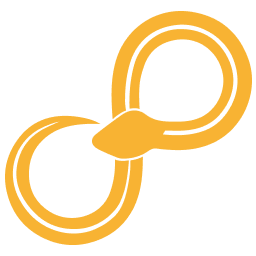# This file is part of Sympathy for Data.
# Copyright (c) 2017, Combine Control Systems AB
#
# SYMPATHY FOR DATA COMMERCIAL LICENSE
# You should have received a link to the License with Sympathy for Data.
from sympathy.api import node
from sympathy.api.nodeconfig import Ports, Tag, Tags
import numpy as np
from sylib.imageprocessing.image import ImagePort
[docs]
class SplitChannels(node.Node):
"""
Copies the given channels from the input image to the first output image,
remaining channels are copied to second output image.
"""
name = 'Split Image Channels'
author = 'Mathias Broxvall'
icon = 'image_split_channels.svg'
description = ('Copies the given channels from the input image to the '
'first output image, remaining channels are copied to '
'second output image')
nodeid = 'syip.splitchannels'
tags = Tags(Tag.ImageProcessing.Layers)
parameters = node.parameters()
parameters.set_string(
'selected_channels', label='selected channels',
description=('Comma separated list of channels to send to first image '
'output.\n\nCommon channel numbers and names:\n 0 '
'(red/gray), 1 (green), 2 (blue).\n '
'Alpha is always last channel.'),
value='0')
inputs = Ports([
ImagePort('Input image', name='input'),
])
outputs = Ports([
ImagePort('Image with selected channels', name='output1'),
ImagePort('All non-selected channels', name='output2'),
])
def execute(self, node_context):
im = node_context.input['input'].get_image()
channels_str = node_context.parameters['selected_channels'].value
def lookup_channel(s, depth):
kv = {'r': 0, 'g': 1, 'b': 2,
'red': 0, 'green': 1, 'blue': 2, 'gray': 0, 'grey': 0,
'hue': 0, 'sat': 1, 'saturation': 1,
'val': 2 if depth in [3, 4] else 0,
'value': 2 if depth in [3, 4] else 0,
'real': 0, 'imaginary': 1, 'alpha': depth-1}
try:
return kv[s.lower()]
except KeyError:
pass
try:
return int(s)
except ValueError:
return None
if len(im.shape) < 3:
im = im.reshape(im.shape[:2]+(1,))
depth = im.shape[2]
channels = []
for s in channels_str.split(','):
v = lookup_channel(s.lstrip(), depth)
if v is not None:
channels.append(v)
complement = list(filter(lambda c: c not in channels, range(depth)))
out1 = np.zeros(im.shape[:2]+(len(channels),))
out2 = np.zeros(im.shape[:2]+(len(complement),))
for pos, c in enumerate(channels):
out1[:, :, pos] = im[:, :, c]
for pos, c in enumerate(complement):
out2[:, :, pos] = im[:, :, c]
if len(channels) > 0:
node_context.output['output1'].set_image(out1)
if len(complement) > 0:
node_context.output['output2'].set_image(out2)
[docs]
class ConcatChannels(node.Node):
"""
Creates a new image with all the channels in the two input images.
"""
name = 'Merge Image Channels'
author = 'Mathias Broxvall'
icon = 'image_merge_channels.svg'
description = ('Creates a new image with all the channels in the two '
'input images')
nodeid = 'syip.concatchannels'
tags = Tags(Tag.ImageProcessing.Layers)
parameters = node.parameters()
inputs = Ports([
ImagePort('Input image', name='input1'),
ImagePort('Input image', name='input2')])
outputs = Ports([
ImagePort('Resulting image with all channels', name='output')])
def execute(self, node_context):
im1 = node_context.input['input1'].get_image()
im2 = node_context.input['input2'].get_image()
if len(im1.shape) < 3:
im1 = im1.reshape(im1.shape[:2] + (1,))
if len(im2.shape) < 3:
im2 = im2.reshape(im2.shape[:2] + (1,))
shape = (max(im1.shape[0], im2.shape[0]),
max(im1.shape[1], im2.shape[1]), im1.shape[2]+im2.shape[2])
out = np.zeros(shape)
out[:im1.shape[0], :im1.shape[1], :im1.shape[2]] = im1
out[:im2.shape[0], :im2.shape[1], im1.shape[2]:] = im2
node_context.output['output'].set_image(out)
